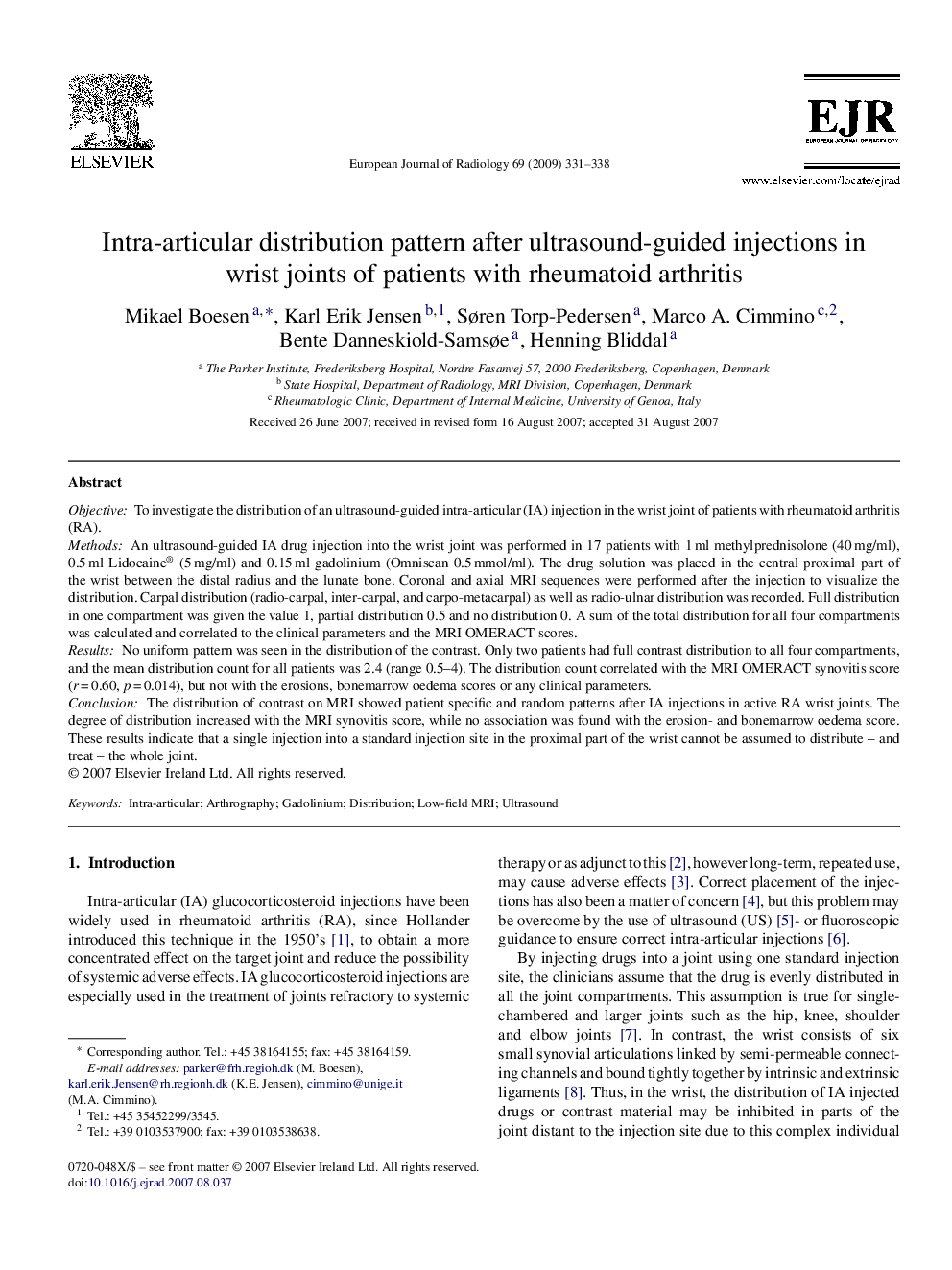| Article ID | Journal | Published Year | Pages | File Type |
|---|---|---|---|---|
| 4227765 | European Journal of Radiology | 2009 | 8 Pages |
ObjectiveTo investigate the distribution of an ultrasound-guided intra-articular (IA) injection in the wrist joint of patients with rheumatoid arthritis (RA).MethodsAn ultrasound-guided IA drug injection into the wrist joint was performed in 17 patients with 1 ml methylprednisolone (40 mg/ml), 0.5 ml Lidocaine® (5 mg/ml) and 0.15 ml gadolinium (Omniscan 0.5 mmol/ml). The drug solution was placed in the central proximal part of the wrist between the distal radius and the lunate bone. Coronal and axial MRI sequences were performed after the injection to visualize the distribution. Carpal distribution (radio-carpal, inter-carpal, and carpo-metacarpal) as well as radio-ulnar distribution was recorded. Full distribution in one compartment was given the value 1, partial distribution 0.5 and no distribution 0. A sum of the total distribution for all four compartments was calculated and correlated to the clinical parameters and the MRI OMERACT scores.ResultsNo uniform pattern was seen in the distribution of the contrast. Only two patients had full contrast distribution to all four compartments, and the mean distribution count for all patients was 2.4 (range 0.5–4). The distribution count correlated with the MRI OMERACT synovitis score (r = 0.60, p = 0.014), but not with the erosions, bonemarrow oedema scores or any clinical parameters.ConclusionThe distribution of contrast on MRI showed patient specific and random patterns after IA injections in active RA wrist joints. The degree of distribution increased with the MRI synovitis score, while no association was found with the erosion- and bonemarrow oedema score. These results indicate that a single injection into a standard injection site in the proximal part of the wrist cannot be assumed to distribute – and treat – the whole joint.
